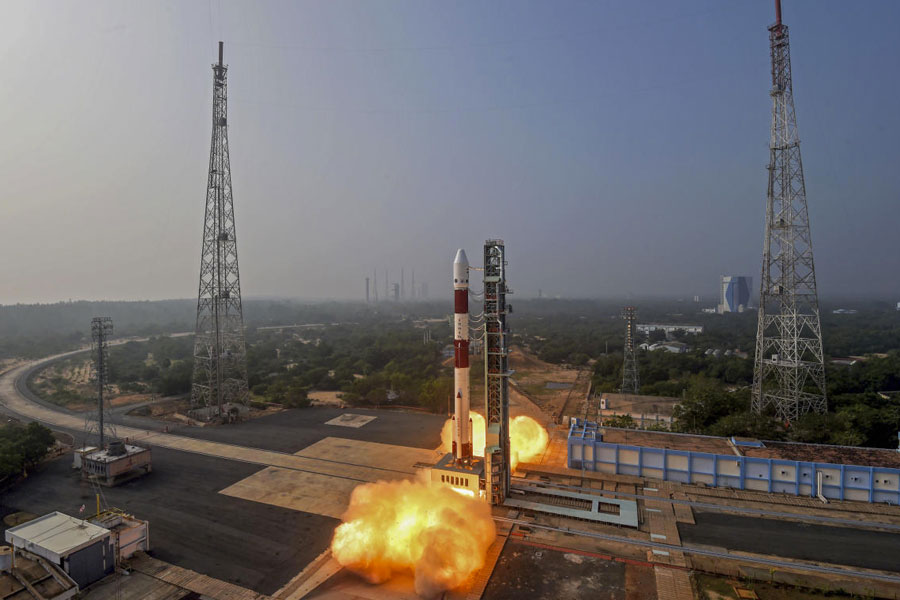India’s space agency on Monday launched a satellite to study X-rays from the most violent objects in the universe and initiated manoeuvres to turn the launch rocket’s spent fourth stage into an orbital platform to test novel ideas in space technology.
The Indian Space Research Organisation’s workhorse rocket called the Polar Satellite Launch Vehicle (PSLV) injected the X-ray Polarimeter Satellite (XPoSat) into its intended orbit 650km above the Earth about 21 minutes after its lift-off from the Sriharikota spaceport on India’s east coast.
The PSLV flight has placed the satellite in “excellent orbital conditions”, Isro chairman S. Somanath said in Sriharikota, minutes after the satellite separated from the PSLV rocket’s fourth stage.
The New Year's Day mission marked the 60th launch of the PSLV, a rocket that has flown since the early 1990s and has successfully carried all its payloads into orbit 58 times.
But the fourth stage’s mission isn’t over. After XPoSat’s separation at 650km, Isro engineers fired the fourth stage engines twice to lower its orbit to 350km above Earth where it is intended to serve as the PSLV Orbital Experimental Module (POEM), a platform to test experimental technologies developed by academic institutions, startups and government research centres.
The POEM platform carries instruments and devices to assess green propellants, new fuel cells — energy sources for spacecraft — and a new type of coating to serve as a radiation shield to enhance the lifespan of spacecraft.
The Indian space startup Bellatrix, for instance, has two experiments aboard POEM — one assessing a technology for electric propulsion, another to assess a green propellant, an alternative fuel for spacecraft thrusters that is less toxic and more attractive in performance than standard hydrazine fuel.
The radiation shielding module from a startup called TakeMe2Space will assess the effectiveness of tantalum coating expected to increase the lifespan of small satellites. Another experiment from a startup called Dhruva Space will evaluate a subsystem for microsatellites.
A space department official said the orbital platform is expected to be operational for “several months”.
One of the experiments on POEM is an instrument from Isro’s Physical Research Laboratory, Ahmedabad, to measure interplanetary dust in the solar system. “These are tiny microscopic particles that burn up when they encounter the Earth’s atmosphere,” said Anil Bharadwaj, PRL director.










